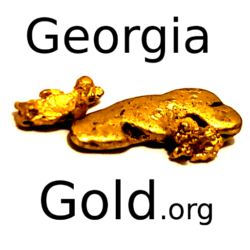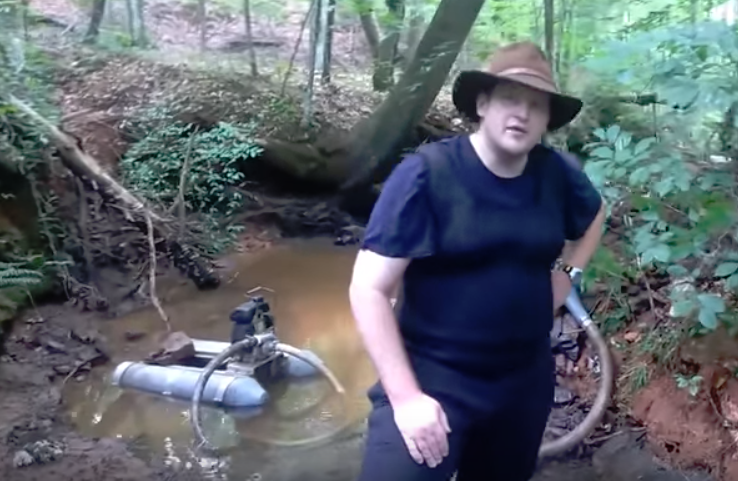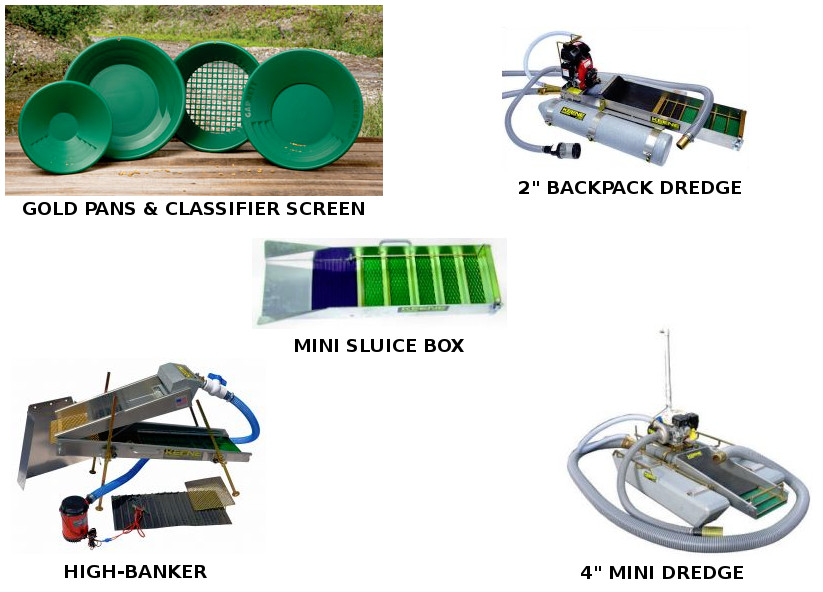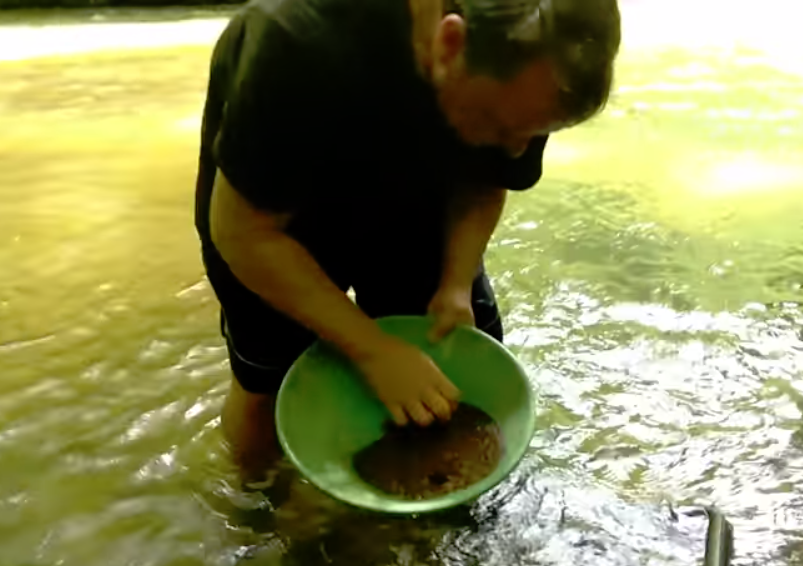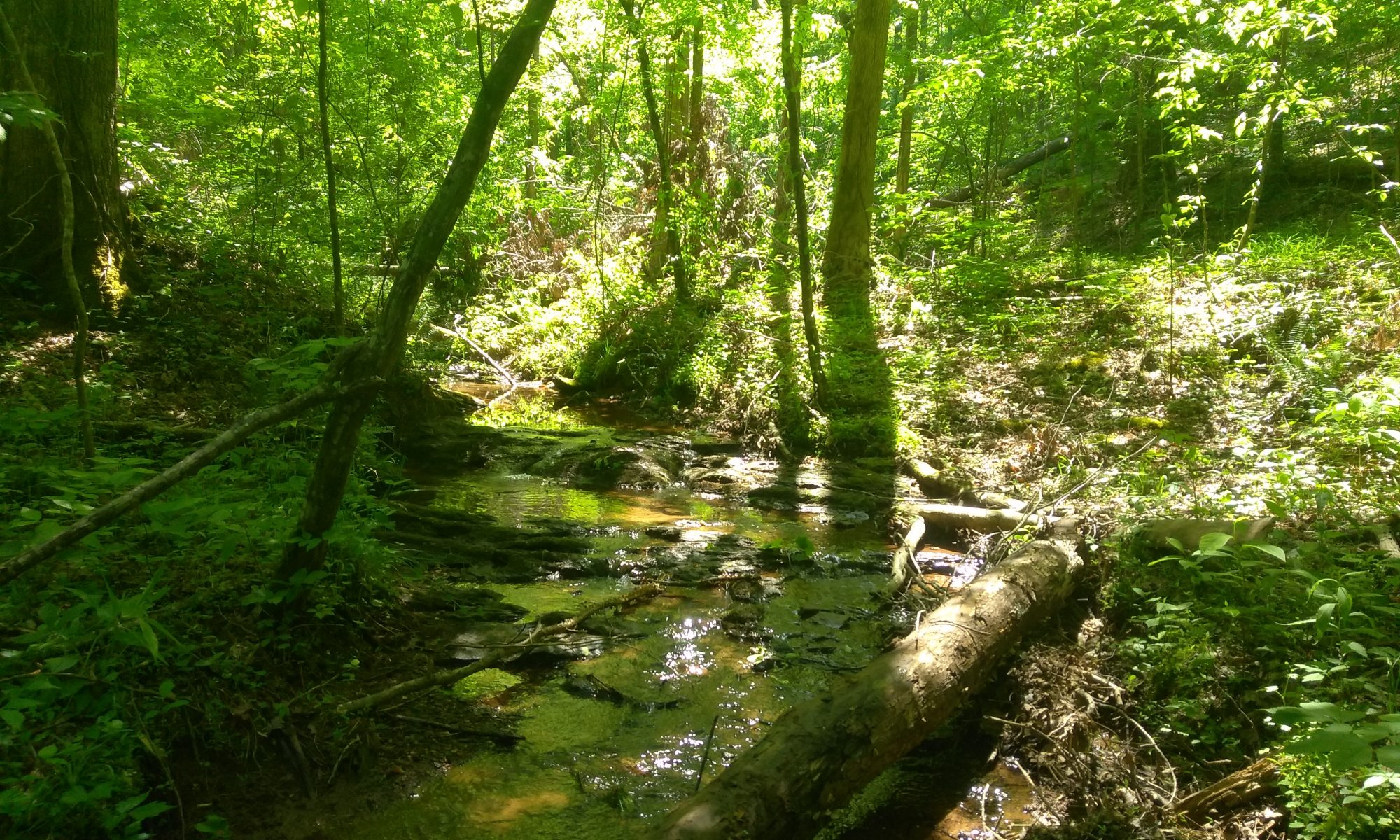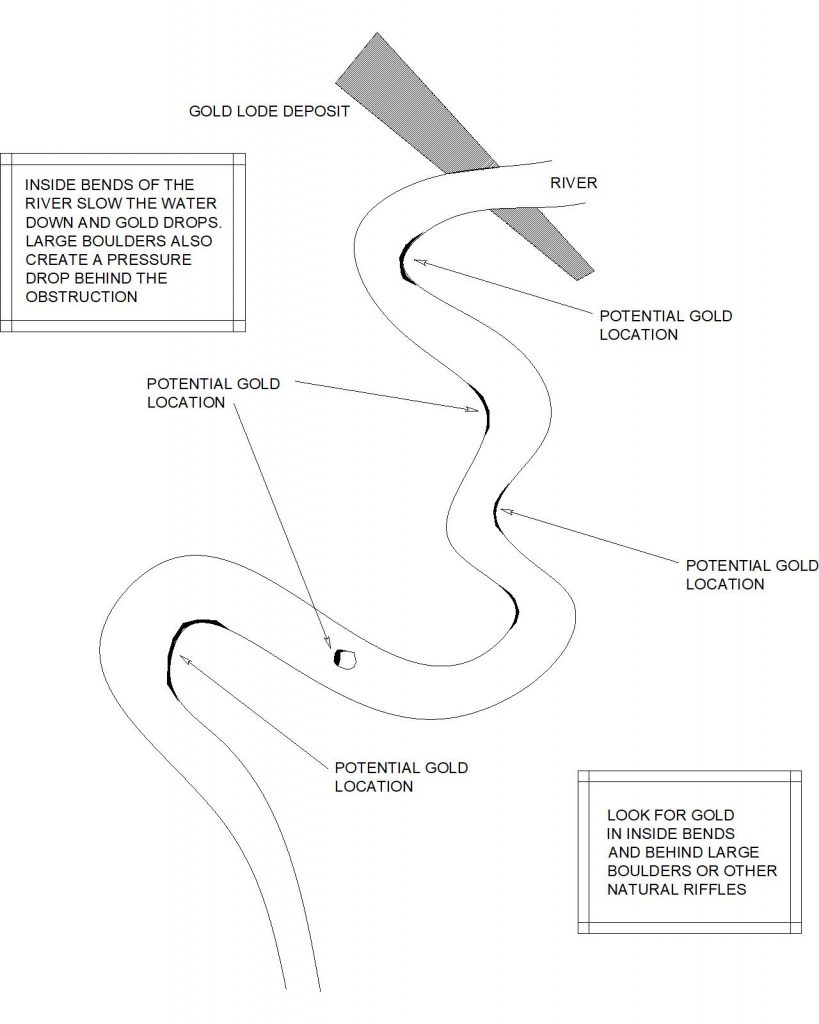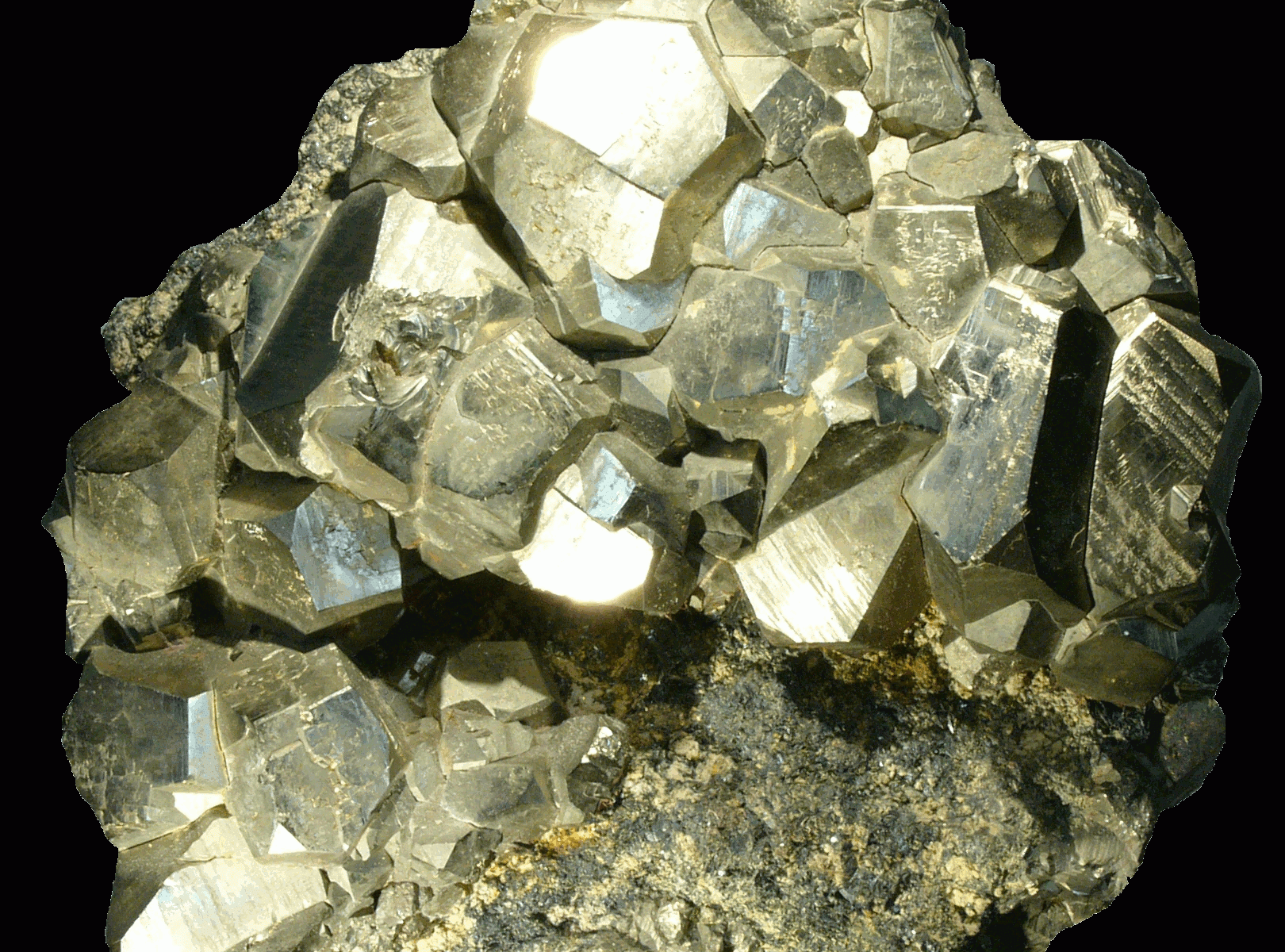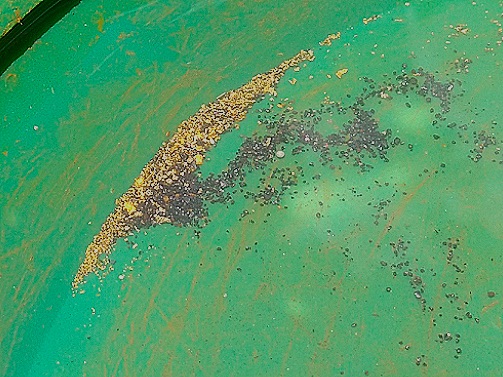If you’re a amateur gold miner like me, you only gold mine on weekends. On top of that, sometimes the good mining locations are pretty far away and by the time you get to the property you might only have a couple of hours to gold mine! I would say it’s pretty common to hear this statement:
“The more material you move, the more gold you find!”
From this statement, it would seem pretty obvious that you should always use the gold mining equipment that moves the most material, right? Well, before we examine this statement, let’s take a look at the different mining equipment:
I actually have all the above mining equipment available to me to use when I go gold mining. Let’s examine the advantages and disadvantages of each piece of equipment of mining equipment :
Gold Pans and classifier screens
Advantages: Light, cheap and very easy to take into the field. If you have a very limited time or budget, this is your best bet. Since it’s a great tool for cleanup or to prospect for gold, pretty much ever gold miner owns one.
Disadvantages: A gold pan is the slowest method of gold mining and used together with picks and shovels can be back-breaking work. On top of that, a gold miner using only a gold pan will only move a limited amount of gold bearing material. There are approximately 400 standard gold pans to the yard, so I would say working a 1/4 yard of material a day with a gold pan would be working pretty hard!
Mini sluice box
Advantages: Light, cheap and very easy to take into the field (same benefits as a gold pan and classifier screens). However, a sluice box does the work of washing the material for you. Instead of constantly bending over in the river and swishing and swirling the pan, you let the river do the washing for you! A sluice box works in conjunction with a creek or river and doesn’t work without a moving water source.
Disadvantages: Since you need a pretty good stream of water to operate a sluice box, it limits you to working directly in a creek or stream. You also still need to shovel the gold bearing material into the sluice box, so the amount of material moved per day is probably limited to about a 1/2 to 1 full yard a day. Still back-breaking work, but a step up from only a gold pan! If you have a very limited budget and want to move the most gold possible, a good sluice box will set you back about $100 dollars.
high banker or power sluice
Advantages: High bankers start around $400 dollars, so they’re not cheap. However, gold mining equipment is notoriously expensive so high bankers are one of the lower cost options. You still need a water source, like a sluice box, but since you pump the water a significant distance from the stream or river, a high banker would allow you to get closer to the gold gold or work material not directly in a creek. The flexibility of directly working old timer tailings and low cost makes a high banker a great choice for beginner gold miners.
Disadvantages: You still need to shovel the gold bearing material into the high banker hopper, so the amount of material moved per day is probably about the same as a regular sluice box or about 1/2 to 1 full yard a day. On top of that, the hopper of the high banker is usually pretty high off the ground so the digging is more difficult than a sluice box sitting directly in the stream.
2″-3″ gold dredge
Advantages: You can’t beat a 2″ dredge for portability! At a total weight of 65lbs, a 2″ back-pack dredge is one of the lightest pieces of mining equipment you can find! They start at around $1500-1800 dollars, so I wouldn’t call a 2″ dredge inexpensive, but still within some budgets. A 3″ dredge weighs around 85-177 lbs, so it adds significant weight and cost (a 3″ dredge costs between $2000-3000 dollars)
Disadvantages: A 2″ dredge is rated at 2 yards per hour, but almost every rock is larger than 2″ so you have to manually throw a lot of rocks!! I swear I’ve used a 2″ dredge and thought to myself, “man I could move more material panning”. I think when you factor in manually throwing all the 2″+ rocks and nozzle clogs, clogged intake filter and other problems, processing a yard yer hour would be pretty good rate with a 2″ gold dredge.
4+” gold dredge
Advantages: Wow, a 4″ gold dredge moves a LOT of material! I’ve never used a 5″ or 6″ dredge, but I can imagine they’re monster gold getting machines! Anything over a 6″ and you’re talking a commercial gold mining operation. As far as processing power, a 4″ gold dredge is rated at 5 yards per hour, but so many factors can effect that rate (loose or compact material, cobble size, operator, etc) it’s probably closer to 2 or 3 yards per hour.
Disadvantages: A 4″+ dredge is $3000+, so that’s a negative! Another disadvantage is the weight. The lowest weight 4″ dredge is probably around 160 lbs, so they’re not light. I’ve gone 4″ gold dredging by myself, but I was a lot younger and wouldn’t attempt now at 45 years old. If you afford the cost and handle the “beast”. One final thought about a large gold dredge, it takes substantial time to transport and set-up a gold dredge. After you drive to your site, unload your gold dredge, set it up in your chosen location, you can loose hours in a day! So the final disadvantage to a large gold dredge is set-up time, you need at least an hour, maybe 2 hours to set it up at your location.
TRUE STORY
On the way to the gold mining fields of north GA, I was attempting to explain the benefits and disadvantages of the different types of mining equipment to my brother, Mike. We only had a couple of hours to gold mine once we reached the property, so I thought we should just work old timer tailings with a gold pan and sample, sample sample. The stream in this area has been well worked many, many times over the years and I never thought we found what we should be finding directly in the creek. Plus, Like I said above, with a 2″ dredge you have to throw a lot of cobble! In fact, this particular creek has very large rocks. Well, Mike called me an “idiot” and said it would be stupid to think we’d find more gold with a gold pan and shovels versus a 2″ gold dredge (we had both pieces of mining equipment in the truck that day). Well, I challenged Mike to prove it! We both had 3 hours, Mike would use the 2″ gold dredge directly in the stream and I would only use gold pans, buckets and a shovel. When the challenge was over, we’d both take our gold concentrates back to the clean-up shack and see who got more gold! Here’s a video of our challenge, who do you think won the challenge?
